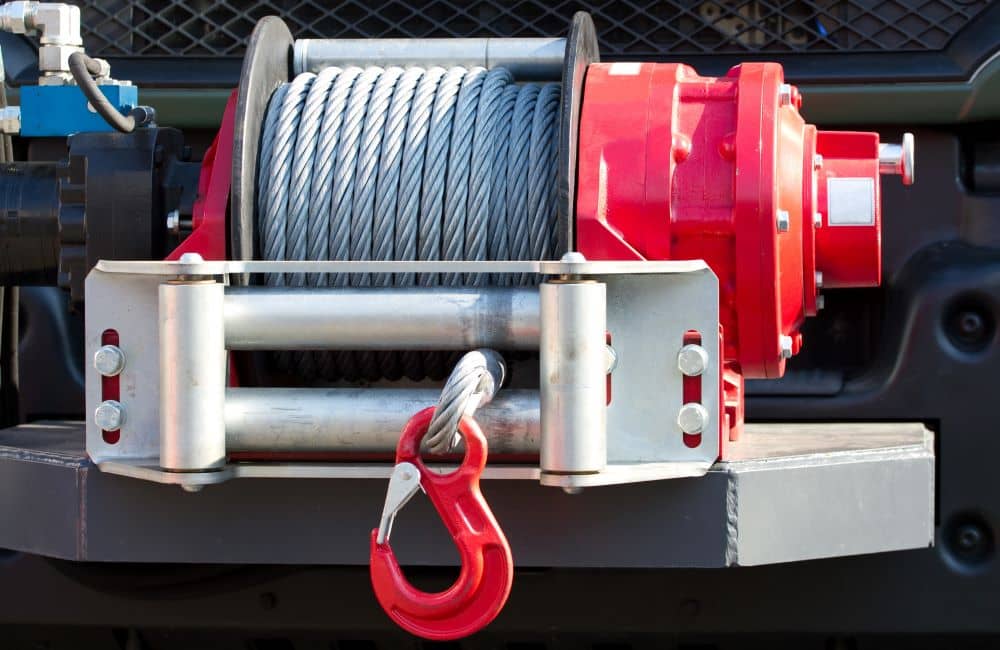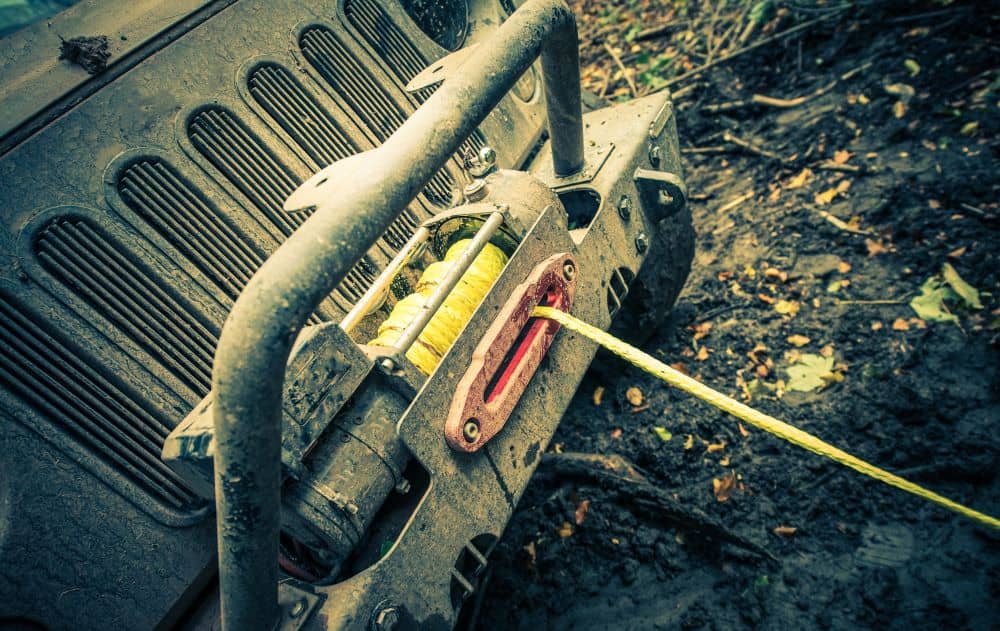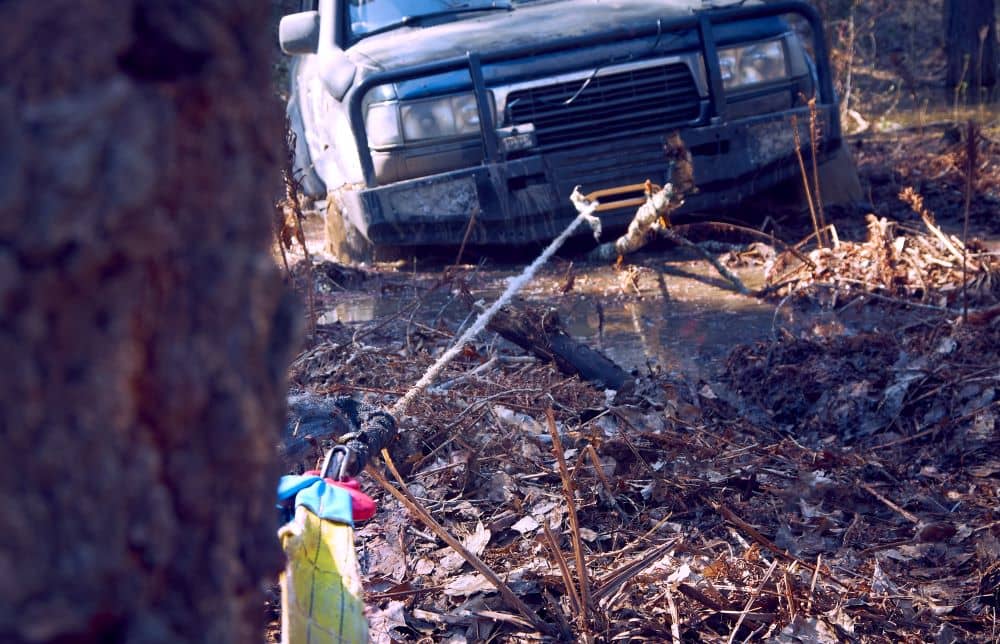A winch recovery is essentially a type of towing. A winch can be mounted to a vehicle to retrieve a vehicle from mud, snow, or other unfavourable conditions. Knowing how to perform a winch recovery can allow you to get your vehicle out of bad situations.
The tricky part is performing the winch recovery correctly. If you don’t know what you’re doing, it’s easy to get hurt. That’s the last thing we want to see happen, which is why we put together this article to walk you through the process.
Here’s what you need to know before you attempt a winch recovery.
What is a Winch?
A winch is a mechanical device that can be mounted to a vehicle to retrieve it from mud, ditches, snow, or other perils. They come in many forms, the simplest of which looks a bit like a fishing reel. For more guides, information and specifications on various types of winches, check out Lifting Gear Hire & Sales.
How Do You Perform a Winch Recovery?
4WD vehicles come with front and rear recovery points that are designed to withstand the considerable force used in winch recoveries. The first step is ensuring that your winch is attached to these points. With that in mind, it doesn’t hurt to check your owner’s manual or pop into the mechanic shop to find out where the points are before you find yourself needing them.
Once the winch is properly secured to your vehicle, you need to choose an anchor point. This is the item you’ll be attaching the other end up of your recovery cables to. If you’re using another vehicle, make sure it’s on flat ground and that the cables are attached to appropriate recovery points.
If there isn’t another vehicle available, look for a heavy object that won’t move or damage your cables and that’s in a straight line from your vehicle. Trees and large boulders can sometimes work but you’ll want to do a thorough inspection before attempting it. A vehicle is preferable, but if you’re in an emergency look for a healthy tree with a thick trunk or the heaviest boulder in the area.
Once you’ve chosen an anchor point, you’ll need to attach your cables. Ensure that the cables are securely attached to the anchor point and that the winch is securely attached to your vehicle. If you have a recovery blanket (which is recommended) you should now place it over the cables. If the cable is made of synthetic rope place the blanket at the end nearest the winch. If you’re using a steel cable place the blanket in the middle. This will lower the chances of someone being injured in the event of a winch or cable failure.
Now, you’re ready to start winching. The only people who should be present are the driver of the vehicle that’s being recovered, the driver of the vehicle assisting in the recovery, and/or a spotter. A spotter is the go-between for communications between the two drivers and will typically use hand signals to let everyone know what to do. Anyone else at the scene should get a good distance away until the winching is over.
Don’t forget to put on your seatbelt and use a low-gear if available.
What Do You Need To Perform a Winch Recovery?
So, what should you have in your winch recovery kit? Well, first you’ll need either a 4WD winch or a 4WD hand winch. What’s the difference? Power. A 4WD winch refers to a winch that uses electrical power to get the job done. As you probably expect, a hand winch is a more traditional version that operates off of human power.
Secondly, you’ll need a winch cable. This can be made out of steel wire or synthetic rope. Before putting the cable in your kit, inspect it for damage.
Thirdly, you should invest in an extension strap. This can be used to increase the reach of your cable if your anchor point isn’t close enough. When using this, make sure it isn’t dragging over rough surfaces. Extension straps can be easily damaged which won’t help your situation.
Next, you’ll need shackles. These are what fasten your cable to the anchor point or your winch to the car. Shackles come in different ratings, so do some investigating on which ones are appropriate for your 4WD.
Finally, you should add gloves, a tree trunk protector, and a snatch block to your kit. Gloves protect you from injury, a tree trunk protector keeps you from harming a tree while it’s being used as an anchor point, and a snatch block lowers the amount of strain on your winch.
When Is a Winch Recovery the Right Move?
Winch recoveries are appropriate in situations where you can’t gain the necessary traction to move your vehicle through other means. If you’ve tried backing out, recovery boards, lowering tire pressure, or creating traction and haven’t been successful it’s winching time.
Dos and Don’ts of Winch Recovery
Before you attempt a winch recovery, let’s go over a few basic dos and don’ts.
Dos
- Re-spool your winch under a load before attempting to use it in the field.
- Use frame-mounted anchor points on vehicles.
- Use a tree trunk protector when using a tree as an anchor point.
- Place a recovery blanket over the cable. This helps prevent it from striking you or someone else if the cable breaks.
- Wear gloves to protect your hands.
- If you have a spotter, agree on hand signals before you begin.
Don’ts
- Don’t wrap a cable directly around a tree.
- Never winch above the base of the tree. If you anchor your cables too high on the tree you may pull it down onto you and your vehicle.
- If you’re using a rock as an actor point, don’t wrap the cable around the rock. Use a tow strap or tree protector.
- Don’t let a cable run across a jagged rock, ledge, or another sharp surface.
- Don’t get in a hurry.
Performing a winch recovery for the first time can be tricky. Keep what you’ve learned today in mind and consider practising the skill before you need it. Even just practising attaching the winch to your vehicle ahead of time can make the process much safer if you need to attempt it on the road or in the wild.


